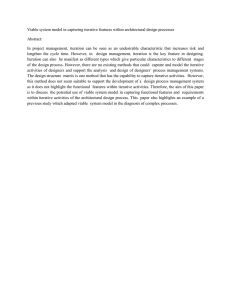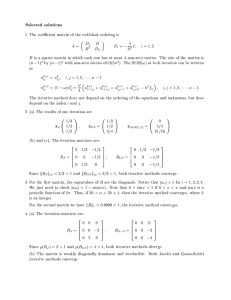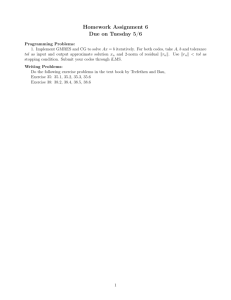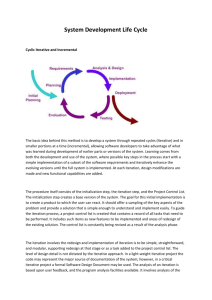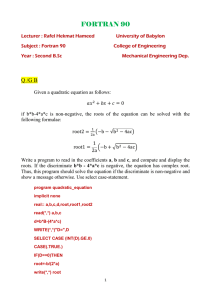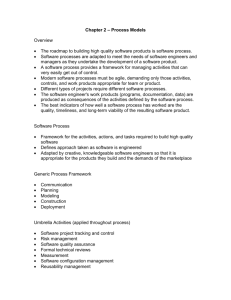FORTRAN 90
advertisement
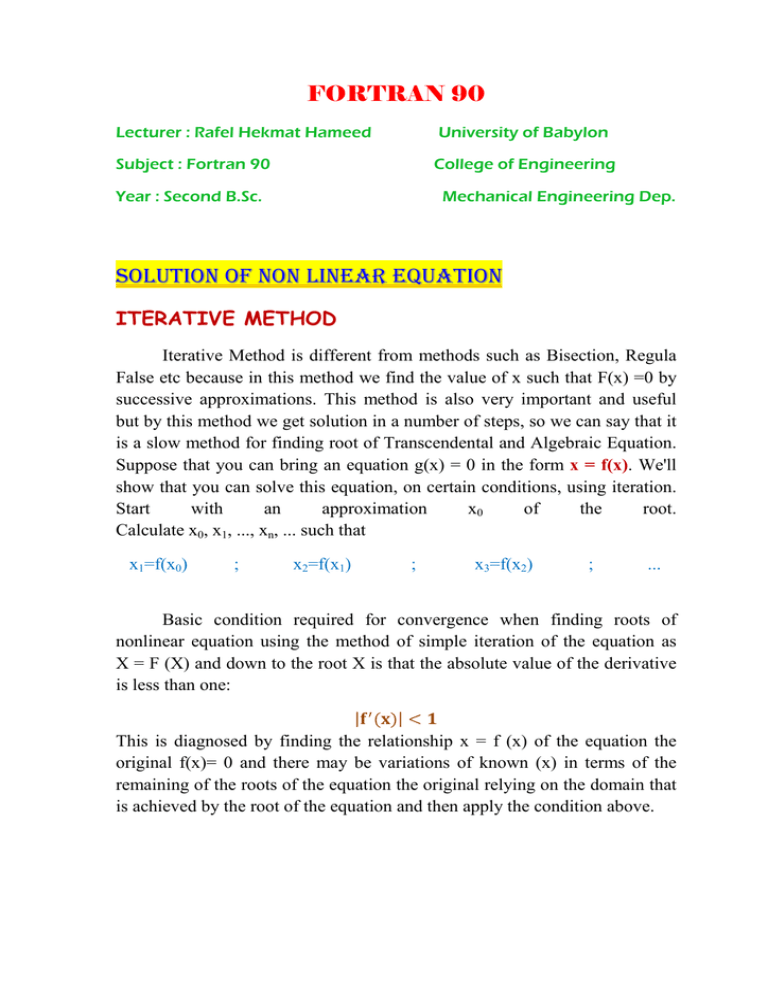
FORTRAN 90 Lecturer : Rafel Hekmat Hameed University of Babylon Subject : Fortran 90 College of Engineering Year : Second B.Sc. Mechanical Engineering Dep. Solution of non linear equation ITERATIVE METHOD Iterative Method is different from methods such as Bisection, Regula False etc because in this method we find the value of x such that F(x) =0 by successive approximations. This method is also very important and useful but by this method we get solution in a number of steps, so we can say that it is a slow method for finding root of Transcendental and Algebraic Equation. Suppose that you can bring an equation g(x) = 0 in the form x = f(x). We'll show that you can solve this equation, on certain conditions, using iteration. Start with an approximation x0 of the root. Calculate x0, x1, ..., xn, ... such that x1=f(x0) ; x2=f(x1) ; x3=f(x2) ; ... Basic condition required for convergence when finding roots of nonlinear equation using the method of simple iteration of the equation as X = F (X) and down to the root X is that the absolute value of the derivative is less than one: ȁ ᇱ ሺܠሻȁ ൏ This is diagnosed by finding the relationship x = f (x) of the equation the original f(x)= 0 and there may be variations of known (x) in terms of the remaining of the roots of the equation the original relying on the domain that is achieved by the root of the equation and then apply the condition above. Example: Find the root of the following equations: 2x3-7x+2=0, and use (x0=1) as an initial value. x=2/7(x3+1) ; f'(x)=6/7x2 PROGRAM ITERATIVE_METHOD IMPLICIT NONE REAL::X0,X1,X,F,TOL=1E-5 F(X)=2/7.0*(X**3+1) WRITE(*,*)'ENTER INITIAL VALUE' READ(*,*) X0 2 X1=F(X0) IF(ABS(X1-X0).GT.TOL) THEN X0 = X1 GOTO 2 ENDIF WRITE(*,*)'SOLUTION=',X1 END
